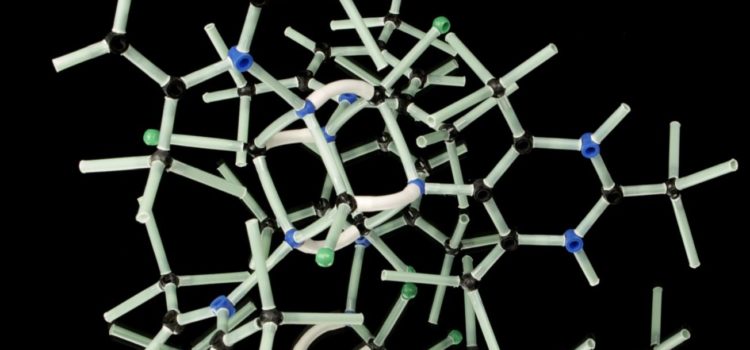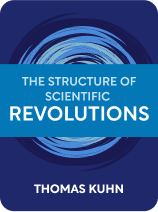

This article is an excerpt from the Shortform book guide to "The Structure Of Scientific Revolutions" by Thomas Kuhn. Shortform has the world's best summaries and analyses of books you should be reading.
Like this article? Sign up for a free trial here .
What is a paradigm shift in science? How does a paradigm shift change scientists’ observations and interpretations of the objects of their study?
A paradigm shift in science occurs when there is a fundamental change in the conceptual and experimental framework that upholds the whole scientific discipline. A paradigm shift doesn’t just change how scientists interpret their observations, but also what they see (i.e. the observations themselves).
Keep reading to learn about paradigm shift in science and what happens in its aftermath.
What Is a Paradigm Shift in Science?
When there is a paradigm shift in science, it could be said that the entire discipline changes with it. Scientists ask different questions, follow different rules, and even use different terms (or use the same terms differently) after a paradigm change. Perhaps even more importantly, they see new information in studies they’ve done before.
This process resembles a gestalt shift. In psychology, a gestalt shift is when your perception of something suddenly changes—like a picture that you can see as either a rabbit or a duck (but never both at once).
However, there are important differences between a simple gestalt shift and a paradigm shift in science. Gestalt shifts can go either way—from duck to rabbit or rabbit to duck, and back again. The subject can even learn to make the switch at will. On the other hand, scientific revolutions generally go one way, and they are irreversible. A scientist who now views the world through a Copernican paradigm can never go back to Ptolemy. A period when scientific perceptions can switch back and forth is, by definition, a crisis.
In a gestalt shift, such as with the picture which could be seen as a duck or a rabbit, either interpretation is correct—or at least, one isn’t more correct than the other. However, as we’ve said before, accepting a new paradigm means rejecting the old one, as if seeing a rabbit meant that you could never see the duck again.
Finally, in psychological experiments there are external forces helping the gestalt shift—for example, in the card experiment described earlier, there was someone there to tell the subject that he had been looking at a black five of hearts. This allowed the subject to begin shifting his perspective of what a playing card could be. However, in science, there is no higher source of authority or information. Scientists have only their instruments and observations to rely on.
Scientific crises aren’t resolved by study and interpretation—that would be normal science, which by definition can’t fix a crisis. They’re resolved by a sudden understanding or change in perception resembling the gestalt shift. Scientists have sometimes described that a paradigm shift in science is like a flash of inspiration, or scales falling away from their eyes, rather than a deliberate understanding of the material.
What Happens After a Scientific Shift?
Many readers will say that what changes with a paradigm shift in science is only how scientists interpret their observations, not what they see. In other words, the observations themselves are unchangeably set by nature, and all that changes is the observers’ understanding. However, like normal science, interpretation needs a paradigm in order to exist. Furthermore, interpretation of a paradigm can’t fix that paradigm. It can only explain and expand upon it. It’s impossible for a paradigm to disprove itself; all it can do is find anomalies that eventually lead to crisis.
For example, consider a stone swinging on the end of a string. Aristotle, whose paradigm said that objects were naturally drawn to their places of rest, saw a stone attempting to fall and being held back by the string. Galileo, however, saw a pendulum, with all the complex physics that implied. By this theory of different interpretations, Aristotle and Galileo both saw pendulums, they just interpreted them differently.
This common view isn’t entirely wrong, and it’s part of a long-standing paradigm about the nature of knowledge and understanding. The current paradigm says that there is an objective reality, which we can learn about through unbiased observations and share by using neutral language to describe it. Furthermore, this paradigm states that objective reality is what scientists are studying, and any discrepancies come from different interpretations of it.
However, despite its past effectiveness, modern research is finding anomalies that suggest the current paradigm is flawed. There isn’t a strong alternative yet, so the current paradigm can’t be rejected right now, but it seems clear that different interpretations of data aren’t enough to explain what happens after a change in paradigm.
For one thing, the data scientists collect is not the same. For example, a falling stone is not the same thing as a pendulum. This isn’t just a reinterpretation of the same thing, it’s a fundamental difference with hugely different implications.
An Aristotelian scientist might observe the stone’s weight, the distance it moves from its starting point, and how long it takes to cover that distance. A Galilean scientist, on the other hand, might observe the pendulum’s starting angle and the radius of its swing. The community transitioning from the falling-stone paradigm to the pendulum paradigm is not just reinterpreting data; that would be impossible, since the data itself is different.
Given that the observations, data, and interpretations are all different, it seems fair to say that, after a paradigm shift, science is now happening in a different and incommensurable world.

———End of Preview———
Like what you just read? Read the rest of the world's best book summary and analysis of Thomas Kuhn's "The Structure Of Scientific Revolutions" at Shortform .
Here's what you'll find in our full The Structure Of Scientific Revolutions summary :
- How scientific paradigms evolve and become replaced with new paradigms
- Why science is more about figuring out what isn't right
- How throwing out past achievements allows for scientific progress






